As a Johannesburg native, Neill Blomkamp knows the quirks of this complex, multi-layered city better than anyone. Not only was he born and raised in the “city of gold,” he also produced the critically acclaimed sci-fi fable District 9 there in 2009, and his familiarity with the nuances of Johannesburg’s urban fabric came to the fore once again in today’s big release, CHAPPiE.
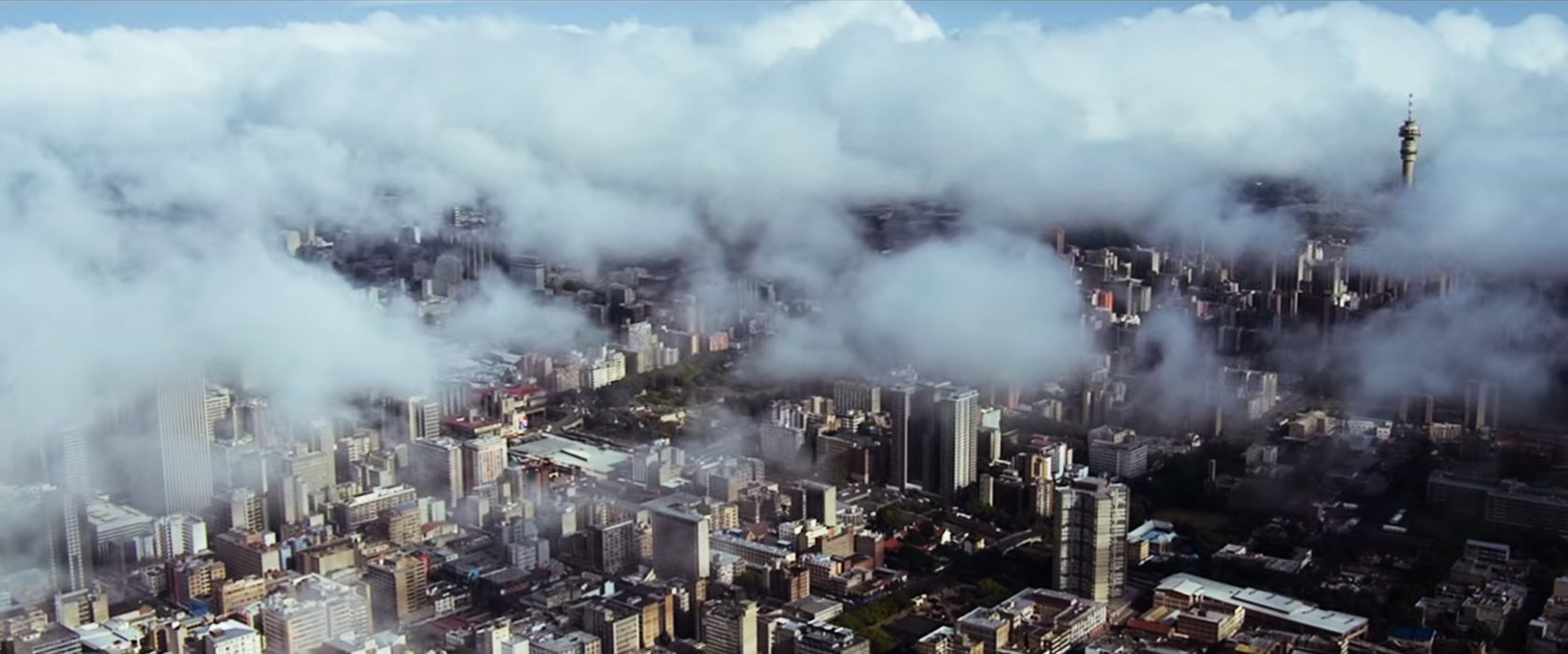
While District 9 was set primarily in a slum-style refugee camp for aliens unfortunate enough to be stranded on our socially divided and ethically corrupt planet , CHAPPiE brings us back within the walls of the city — a city rife with crime, populated by residents with so little faith in their fellow citizens that they have turned to robots for protection.
The brains behind this brilliant new squad of police droids are those of an engineer — Deon Wilson, played by the excellent Dev Patel (of Slumdog Millionaire fame) — an employee at a company whose Robocop-like ‘Scouts’ are now patrolling Johannesburg and keeping the criminal underworld at bay.
It is a wonder that such inspirational designs are possible given Deon’s work environment, which is up there with the most mind-numbingly dull office spaces in the known universe: classic cubicles and suspended ceilings, almost as beige as Neo’s allegorical prison in The Matrix. Nonetheless, it is this environment in which the boy genius conjures up the world’s first ‘thinking’ robot, belatedly christened CHAPPiE (more on him later).
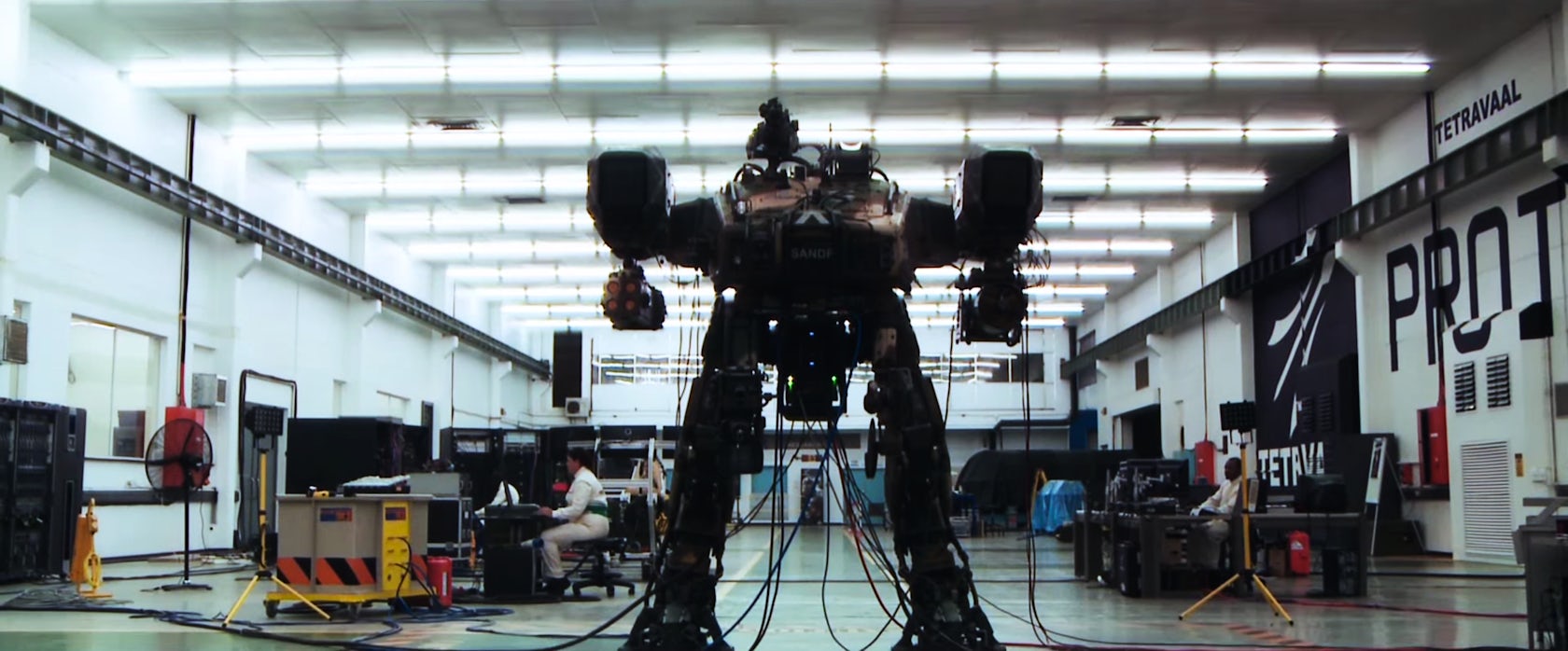
The movie’s first architectural space of note is the engineer’s robotics laboratory, a testing ground for experimental crime-fighting machines. This space is cool and clinical, a vast warehouse illuminated by row upon row of harsh white strip lights. Blomkamp elected for an environment that is conspicuously devoid of character and warmth, a vacuous place that maps onto the psyche of the movie’s obligatory villain, Vincent, who is played by a mullet-topped Hugh Jackman with major anger management issues.
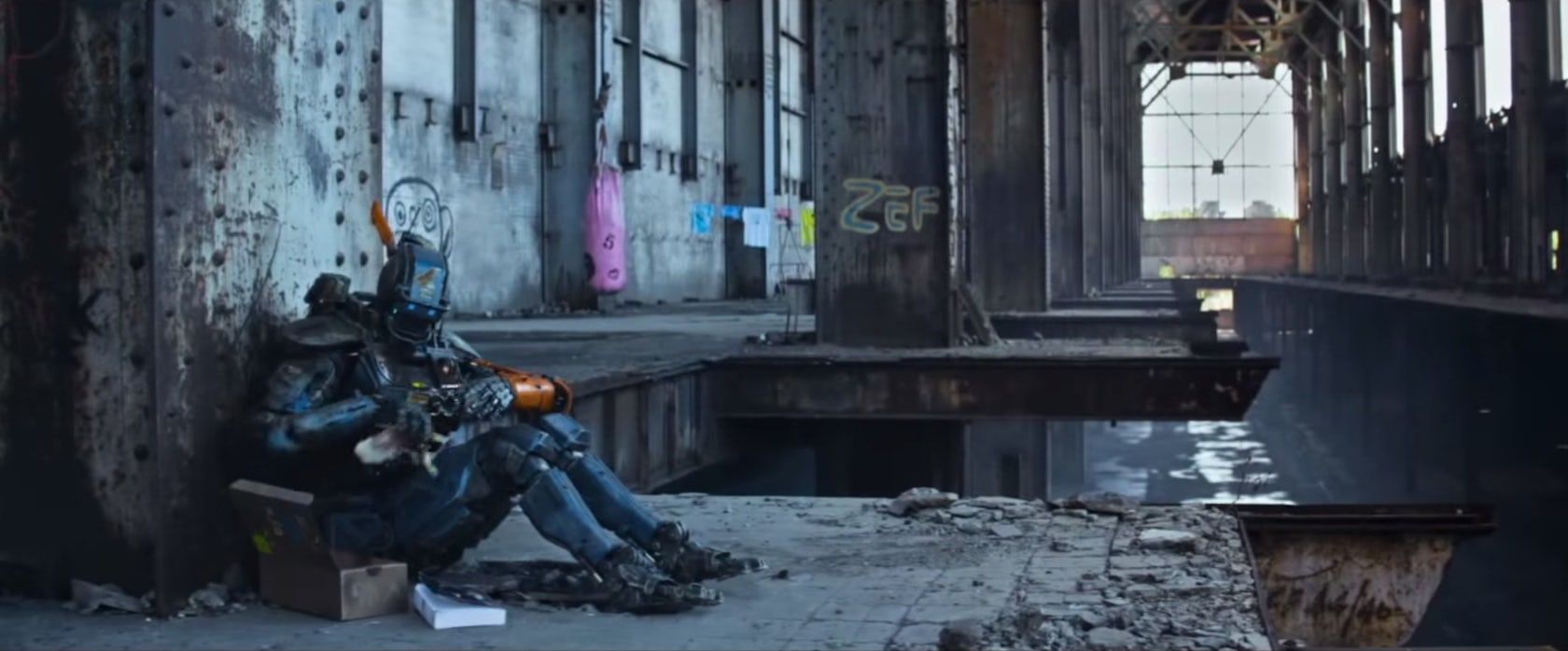
This sterile space stands in stark contrast to the next key location – an industrial ruin with bohemian flare, the birthplace of CHAPPiE and home of his lawless parents, Yolandi and Ninja (a.k.a. eccentric South African rap sensation Die Antwoord). The anarchic duo’s makeshift hideout is located in an abandoned factory building, which appears to have been subjected to a peculiar, piecemeal process of adaptive reuse.

The walls of the den have been coated with fluorescent graffiti, crumbling pillars are strung with toy-filled hammocks, and the concrete floors are cluttered with mismatched, candy-colored furniture. Not everyone bought into the misfits’ eclectic environment: Slash Film critic Angie Han bemusedly describes the lair’s “gangster-twee aesthetic,” although, she adds, “it’s a nice deviation from the Apple Store-like futures we usually see in sci-fi films.”
While the unconventional interior design of the hideout seems puzzling at first, its aesthetics become more poignant in the context of the plot: The ruins form a kind of punk-rock kindergarten, a haven where the child-like CHAPPiE is protected from the omnipresent dangers of the surrounding city. When he is eventually exposed to the real-world perils of Johannesburg’s urban landscape, the plot shifts to the movie’s third key location — and easily the most notable in architectural terms.
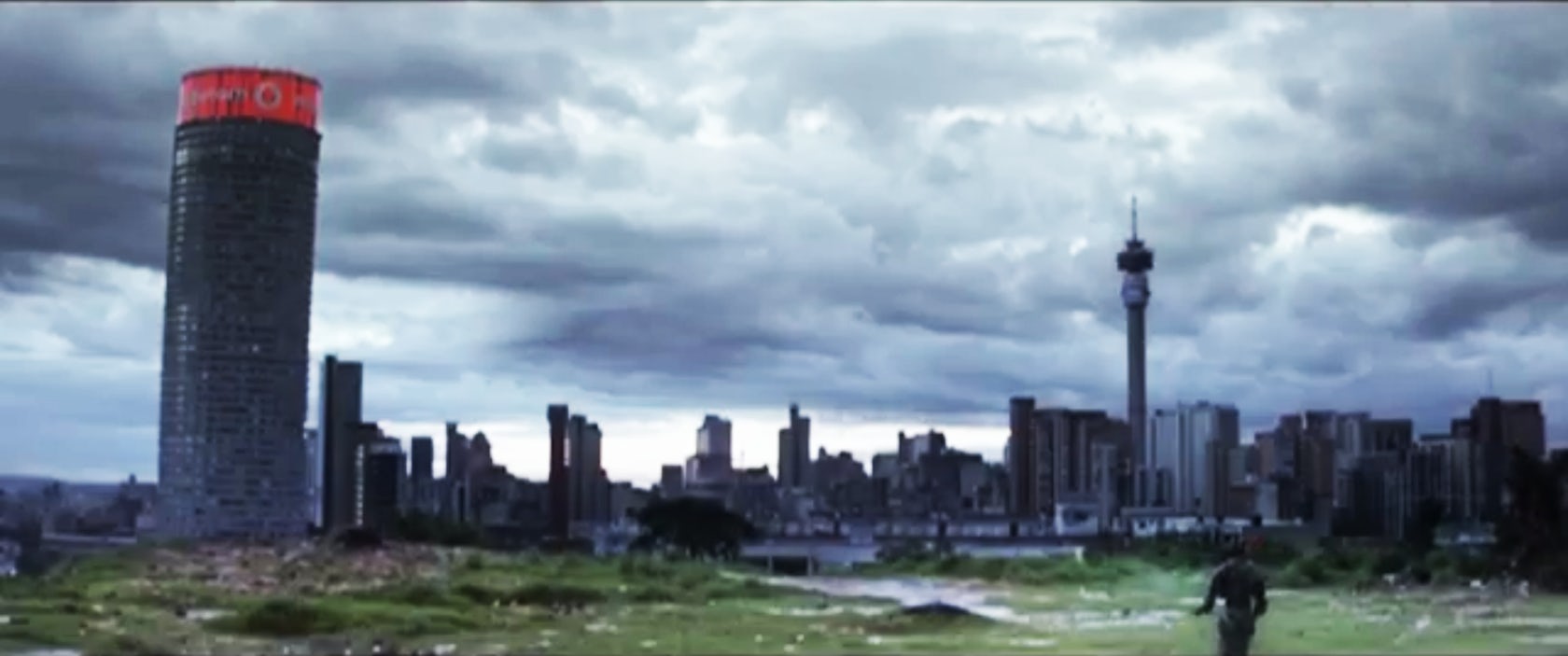
As the naïve robot is coaxed into the criminal underworld, his journey brings him to South Africa’s tallest residential building, the infamous Ponte Tower. The story behind this soaring cylindrical structure is incredibly controversial: Designed by Manfred Hermer and constructed in 1975, it was envisioned as a white-only haven of luxury, complete with panoramic views across the city. However, by the end of the 1980s, criminal activity had become rife within the tower, and as Apartheid ended, gangs took over. The structure deteriorated, and the building’s deep central void became a rubbish dump and suicide drop, filled with up to five stories of debris.
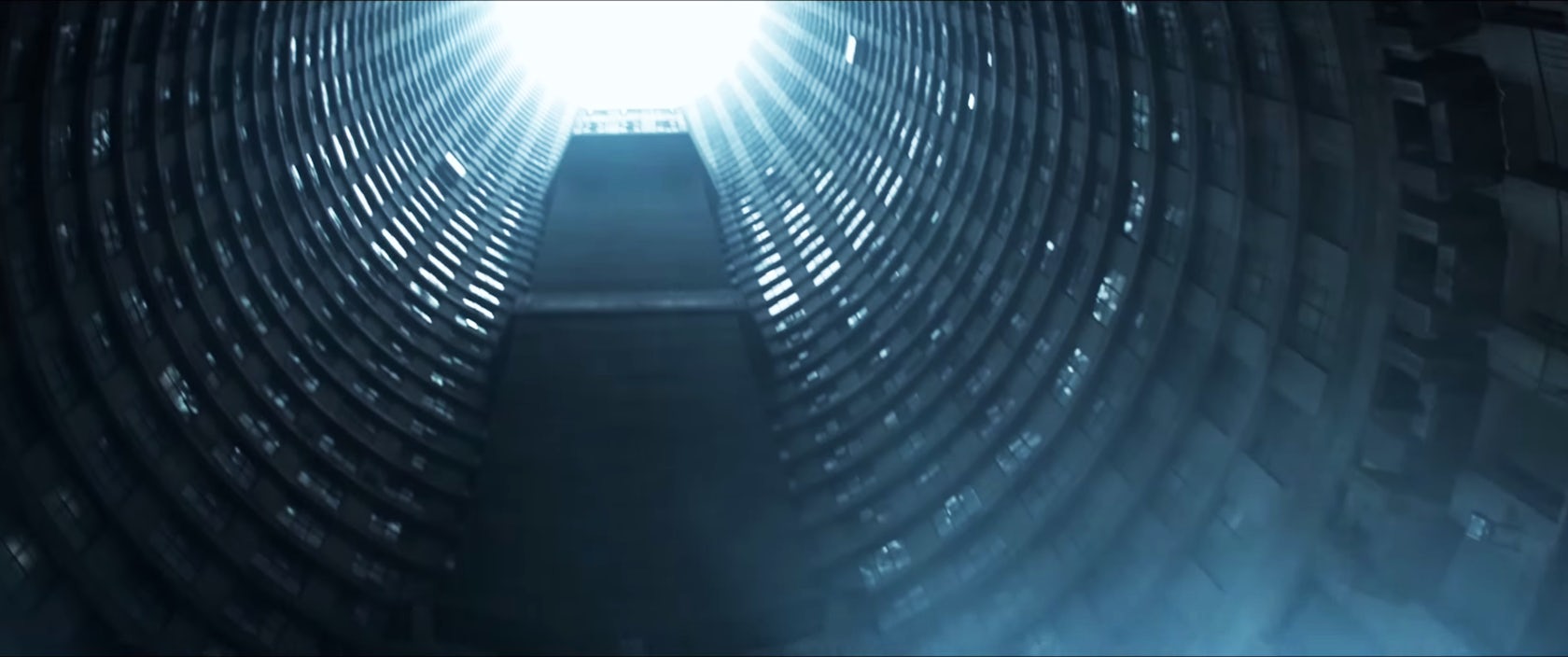
The tower’s crumbling architecture stands as a perfect metaphor for the social and political turmoil in South Africa’s recent history, and this is all too evident during CHAPPiE’s ill-advised excursion into the bowels of the structure’s light-starved inner core. Ponte Tower was undoubtedly an essential shooting location for Blomkamp, as the director sought architecture that could form a physical manifestation of his protagonist’s thoughts and fears. The choice is well-founded — the shadowy atrium is littered with the remnants of past tenants, their fate unknown, and the air is filled with a potent mixture of melancholy and fear.

Ultimately, though, Blomkamp couldn’t resist a return the industrial playground of Yolandi and Ninja’s sprawling hideout. Its towering arcade of steel beams and disintegrating brickwork makes for the ideal setting for the film’s explosive finale. This is architecture as arena: The walls are reduced to mere apparatus, ramparts to contain the action and accentuate destruction.
Overall, the architecture of CHAPPiE is refreshing for its lack of contrived embellishments: Blomkamp has not attempted to transform future Johannesburg into a space-age world of cloud-bursting skyscrapers, monorails, and flying cars, but nor is it a wild, dystopian nightmare akin to the L.A. in the director’s previous sci-fi outing, Elysium.

This is the story of a frenetic, flawed city, mirroring the real world in all respects, except for the freshly sown seeds of A.I. — thereby setting the scene for a technological revolution that could change everything. Speaking of which, I wonder what a certain Elon Musk thinks of all this…?
Yours robotically,
All images courtesy Sony Pictures Entertainment




